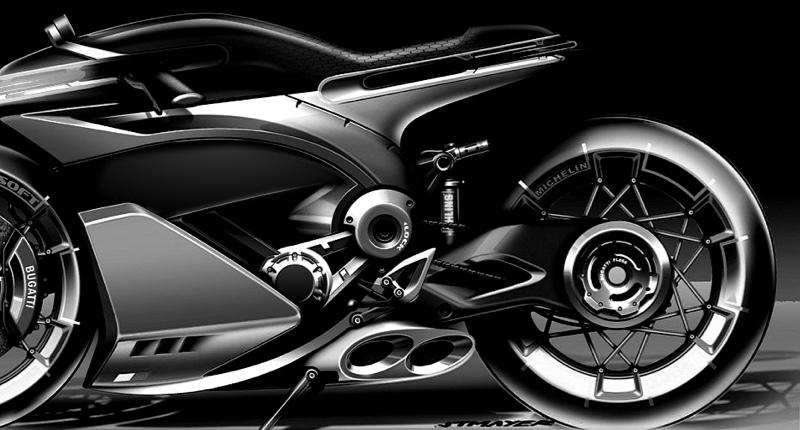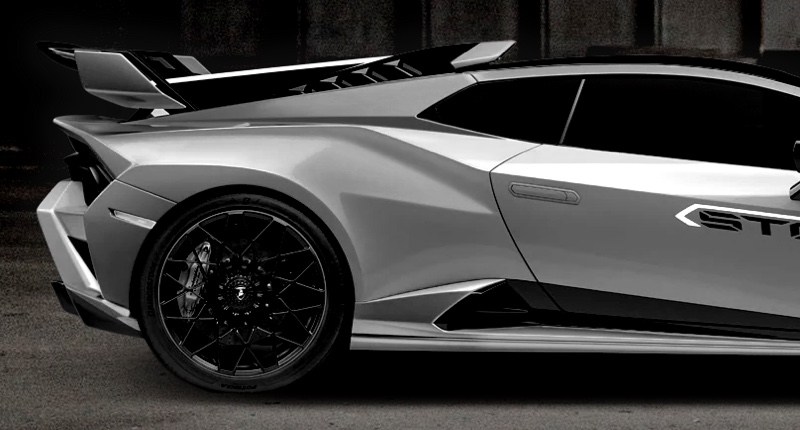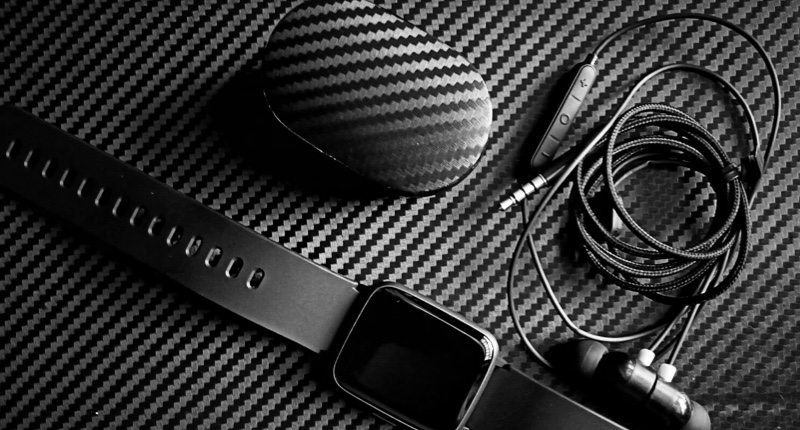Which Is Better for Cars: Dry or Wet Carbon?
- Which Is Better for Cars: Dry Carbon vs Wet Carbon?
- What ‘dry carbon’ and ‘wet carbon’ mean for car owners and builders
- How manufacturing differs: dry carbon vs wet carbon (process overview)
- Performance comparison: strength, stiffness, and weight for dry carbon vs wet carbon
- Side-by-side comparison table: dry carbon vs wet carbon for automotive parts
- Appearance and finish: which looks better on a car?
- Cost, lead time, and production scale considerations (: carbon fiber parts)
- Repairability and longevity: how dry carbon vs wet carbon behave over time
- Real-world automotive applications: when to choose dry carbon vs wet carbon
- Environmental and sustainability considerations
- How Supreem Carbon helps car builders choose the right option
- Core products and competitive strengths
- Practical checklist: choosing dry or wet carbon for your next car project ( keyword: carbon fiber parts)
- Cost examples and quoting considerations
- FAQ — Common questions about dry carbon vs wet carbon
- Q: Is dry carbon always better than wet carbon for cars?
- Q: Can wet carbon be as strong as dry carbon?
- Q: How can I tell if a part is real dry carbon or wet carbon?
- Q: Which option is better for a track car wing?
- Q: Can Supreem Carbon produce both dry and wet carbon parts?
- Contact Supreem Carbon — get a quote or view products (CTA)
- Sources
Which Is Better for Cars: Dry Carbon vs Wet Carbon?
What ‘dry carbon’ and ‘wet carbon’ mean for car owners and builders
When enthusiasts and builders discuss dry carbon vs wet carbon, they are really comparing two manufacturing approaches for carbon fiber composite parts:
- Dry carbon typically refers to prepreg carbon fiber cured under controlled heat and pressure (often in an autoclave). It uses pre-impregnated fiber sheets with precisely measured resin content.
- Wet carbon describes hand layup, vacuum bagging, or resin infusion methods where dry fiber cloth is saturated with liquid resin during the manufacturing process.
Understanding these definitions is the first step to choosing the right parts for cars—whether you prioritize weight savings, structural performance, surface finish, lead time, or cost.
How manufacturing differs: dry carbon vs wet carbon (process overview)
A practical look at the production steps clarifies why properties differ between dry and wet carbon:
- Dry carbon (prepreg + autoclave/vacuum cure) — Sheets of fiber pre-impregnated with resin are laid into molds. Parts are vacuum-bagged and cured in an autoclave or oven under pressure and controlled temperature. This yields high fiber volume fraction, consistent resin distribution, and minimal voids.
- Wet carbon (hand layup, resin infusion) — Dry fabric is placed in the mold and resin is applied manually (or pulled in via vacuum infusion). Cure may occur at room temperature or under heat, often without autoclave pressure. Process is simpler but more operator-dependent.
Key manufacturing differences explain why dry carbon often commands a High Quality in performance applications while wet carbon remains popular for cosmetic and budget-conscious projects.
Performance comparison: strength, stiffness, and weight for dry carbon vs wet carbon
For car components where structural integrity and minimum weight matter (aero parts, chassis components, structural braces), material properties matter more than looks.
In general:
- Dry carbon (prepreg) typically achieves higher fiber volume fraction — this means more carbon fiber per unit volume, resulting in superior stiffness-to-weight and strength-to-weight ratios.
- Wet carbon can be adequate for non-structural parts — it is often used for trim, covers, and styling pieces where extreme strength is not required.
Side-by-side comparison table: dry carbon vs wet carbon for automotive parts
The table below summarizes typical differences. Values are representative ranges or qualitative judgments based on industry sources.
| Attribute | Dry Carbon (Prepreg/Autoclave) | Wet Carbon (Hand layup/Infusion) |
|---|---|---|
| Typical fiber volume fraction | ~55%–65% (higher, more consistent) | ~35%–55% (lower, more variable) |
| Strength & stiffness | Higher and more predictable | Good for non-structural parts; variable |
| Weight | Lighter for same performance | Often heavier at similar thickness |
| Surface finish | Cleaner, smoother, high-gloss finish | Often needs more finishing to match prepreg gloss |
| Production cost | Higher (materials, autoclave, tooling) | Lower (cheaper materials and equipment) |
| Repeatability & quality control | High (industrial processes) | Operator-dependent, more variability |
| Typical applications | Structural aero parts, performance panels, OEM-grade components | Interior trim, cosmetic panels, small-run styling parts |
Sources for ranges and process descriptions are listed at the end. Note that exact performance depends on weave, resin chemistry, layup schedule, and curing method.
Appearance and finish: which looks better on a car?
Both methods can produce attractive carbon patterns, but the visual quality differs:
- Dry carbon prepreg parts typically show a sharper, tighter weave with fewer imperfections because resin content and curing are tightly controlled.
- Wet carbon can achieve beautiful results but often requires more sanding, filling, and clear-coating to reach the same factory-perfect gloss.
If the main goal is show-quality exterior components with minimal finishing, dry carbon usually provides the better out-of-mold appearance. For budget builds that will be painted or wrapped, wet carbon may suffice.
Cost, lead time, and production scale considerations (: carbon fiber parts)
Deciding between dry carbon vs wet carbon often comes down to economics and production scale:
- Cost per part: Dry carbon has higher material and tooling costs and often longer setup (autoclave scheduling), so single-piece prices are higher. Wet carbon has lower upfront costs.
- Lead time: Small manufacturers with autoclaves can still have longer lead times for prepreg curing; wet layup can be faster for one-off parts.
- Volume production: For high-volume, repeatable parts (OEM or high-end aftermarket), dry carbon’s consistency can justify the initial investment. For low-volume or custom projects, wet carbon offers lower barriers to entry.
In short: if you sell or produce high-quality performance components, design for dry carbon where budget allows. For custom aesthetics or lower-volume styling pieces, wet carbon makes commercial sense.
Repairability and longevity: how dry carbon vs wet carbon behave over time
Carbon fiber composites behave differently than metals when damaged. From a longevity and repair perspective:
- Dry carbon parts with higher fiber content and better consolidation can be more damage-tolerant in certain loading situations, but once cracked they may require skilled composite repair.
- Wet carbon repairs are often simpler for cosmetic fixes but structural repairs should still be performed by trained technicians.
Both types can last many years if properly designed and installed. For critical load-bearing components, choose prepreg manufacturing and validated repair procedures.
Real-world automotive applications: when to choose dry carbon vs wet carbon
Examples to help you choose:
- High-performance aero parts (splitters, wings, diffusers): Prefer dry carbon for weight savings, stiffness, and consistent aerodynamic surfaces.
- Structural or safety-related parts (roll cages, suspension links): Use parts manufactured to engineering standards—prepreg/autoclave or engineered wet-layup under strict QA depending on design. OEMs lean to prepreg.
- Exterior styling panels and interior trim: Wet carbon is economical and widely used for cosmetic panels and accessories.
- One-off custom builds: Wet layup or vacuum infusion is often the pragmatic choice unless the customer wants true OEM-level performance and finish.
Environmental and sustainability considerations
Both processes use thermoset resins that are not easily recycled, but manufacturing efficiency differs:
- Dry carbon prepreg systems generate less resin waste per part due to controlled resin content and automated cutting, but the processes and autoclaves consume energy.
- Wet layup can create more resin waste and VOC emissions if not controlled, but lower energy equipment is sometimes used.
- We offer both carbon fiber automobile parts and carbon fiber motorcycle parts, so we can recommend the appropriate manufacturing method based on part function—structural vs cosmetic.
- Our factory spans approximately 4,500 square meters with 45 skilled production and technical staff, giving us the capacity to deliver short-run customized carbon fiber parts while also handling higher-quality prepreg projects.
- With an annual output value near 4 million dollars and over 1,000 product types (including more than 500 customized parts), Supreem Carbon combines craftsmanship with production reliability.
- Customized carbon fiber parts for cars and motorcycles
- Carbon fiber luggage and sports equipment
- Research-driven product development with skilled production teams
- Is the part structural or safety-related? If yes, default toward dry carbon/prepreg or engineered wet layup with certified process controls.
- Is weight and stiffness critical (racing, track use)? Dry carbon usually offers better performance per weight.
- Is surface finish and appearance paramount (show car, concours)? Dry carbon provides superior out-of-mold appearance.
- Is budget limited or is the part a cosmetic trim item? Wet carbon is cost-effective.
- Is the project a one-off or short run? Wet layup can reduce tooling cost and lead time.
- Do you require consistent, repeatable parts at volume? Prepreg/dry carbon is more suitable for scaling production.
- Functional requirements (structural vs cosmetic)
- Projected volumes (one-off, small run, or larger batch)
- Finish expectations (raw clearcoat, paint prep, gloss level)
- Budget and lead time constraints
- Visit our website: https://www.supreemcarbon.com/
- Request a quote or product consultation through our site to get recommendations based on performance needs and budget.
- CompositesWorld — Articles on prepreg vs wet layup methods and fiber volume fraction ranges (industry insights and process comparisons).
- Hexcel — Technical datasheets and white papers on carbon fiber prepregs and their performance characteristics.
- Toray Industries — Technical materials on carbon fiber properties and composite manufacturing guidance.
- Industry aftermarket and engineering articles discussing carbon fiber applications in automotive contexts (trade press summaries and manufacturer technical notes).
Manufacturers increasingly consider resin choices and recycling programs; when evaluating suppliers, ask about waste management and material sourcing.
How Supreem Carbon helps car builders choose the right option
Supreem Carbon, established in 2017, is a customized manufacturer of carbon fiber parts for automobiles and motorcycles. We integrate R&D, design, production, and sales to deliver high-quality products and services. Our core competencies include technology research and development of carbon fiber composite products and production of related items.
Why Supreem Carbon is relevant when comparing dry carbon vs wet carbon:
Whether you need lightweight structural components manufactured to strict performance targets (where dry carbon/prepreg is recommended) or exterior styling pieces on a budget (where wet carbon is appropriate), Supreem Carbon can advise and manufacture to your specifications. Visit our site: https://www.supreemcarbon.com/
Core products and competitive strengths
Supreem Carbon specializes in:
Our competitive advantages: broad product range, customization expertise, combined R&D and manufacturing capabilities, and experienced staff able to guide clients between dry carbon and wet carbon solutions depending on application, budget, and required performance.
Practical checklist: choosing dry or wet carbon for your next car project ( keyword: carbon fiber parts)
Use this quick checklist to decide which process fits your project:
Cost examples and quoting considerations
Costs vary widely by geometry, tooling, finishing, and certification needs. When requesting quotes from manufacturers like Supreem Carbon, provide:
Supreem Carbon’s experience in both prepreg and wet technologies allows tailored recommendations that balance performance and cost.
FAQ — Common questions about dry carbon vs wet carbon
Q: Is dry carbon always better than wet carbon for cars?
A: Not always. Dry carbon provides better mechanical properties and finish for performance and structural parts, but wet carbon is a valid, economical choice for non-structural trim, prototypes, and low-volume pieces.
Q: Can wet carbon be as strong as dry carbon?
A: With careful engineering and thicker laminates, wet carbon can meet strength requirements for many uses, but it generally requires more material to match the strength-to-weight of a prepreg part.
Q: How can I tell if a part is real dry carbon or wet carbon?
A: Inspectations: prepreg parts usually have a very tight weave, uniform clearcoat, and sharp edges. Wet layup parts may show slightly softer weave detail, more filler or surfacing layers, and often require more finishing.
Q: Which option is better for a track car wing?
A: For a wing where aerodynamic precision, stiffness, and minimal weight matter, dry carbon prepreg parts are preferred. They deliver predictable results under load.
Q: Can Supreem Carbon produce both dry and wet carbon parts?
A: Yes. Supreem Carbon’s integrated R&D and production setup supports customized solutions across both manufacturing methods to match intended use, budget, and finish requirements.
Contact Supreem Carbon — get a quote or view products (CTA)
If you’re deciding between dry carbon vs wet carbon for an automotive or motorcycle project, our team can help evaluate trade-offs and propose the optimal manufacturing route. Contact Supreem Carbon to discuss custom carbon fiber automobile parts, carbon fiber motorcycle parts, or other customized carbon fiber parts:
Sources
For further details specific to your application, contact Supreem Carbon’s technical team to review part requirements, intended use, and production options.
Custom carbon fiber running shoes Manufacturers and Suppliers
Are Carbon Fiber Helmets Worth It? Cost vs. Benefit Analysis

The Ultimate Guide to Custom Carbon Fiber Interior Parts: Everything You Need to Know
High Quality Carbon Fiber Race Car Parts | Supreem Carbon
For Products
Which carbon fiber material you can provide in production?
1*1 plain /2*2 twill / forged carbon / honeycomb / kevlar and so on.
What is main products for factory?
Supreem carbon mainly produce carbon fiber custom products for automobile and motorcycle accessaries, including the design, develop and manufacturing of appearance parts, interior parts, functional parts, etc. Other carbon fiber custom goods also can produce for you.
For Customized Service
What can be customized in addition to customized carbon fiber parts?
You can customize your company logo, packaging, even the color of coating and so on.
What is the customization process of carbon fiber products?
1. Customer provide 3D drawing, design requirement or idea
2. Technician evaluate project feasibility and provide a quotation
3. Project confirmation and arrange sample production
4. Delivery and customer feedback
5. Big scale orders production
For After-sales Service
What can I do if the carbon fiber products arrived is broken?
Please give us feedback as soon as possible and we will send new one to you.

Yamaha R1 Carbon Fiber Side Fairings
Introducing the Supreem Carbon Fiber Long Side Panels for Yamaha R1. Crafted with precision and expertise, this front side fairing is designed to elevate the performance and aesthetics of your R1. Made from high-quality carbon fiber, this fairing is not only lightweight but also incredibly durable, providing optimal protection for your motorcycle.

Yamaha R1 Carbon Fiber Airbox Tank Cover
The Supreem Carbon Yamaha R1 Carbon Fiber Airbox Tank Cover provides lightweight, durable protection with a sleek finish. Designed for R1 models, it enhances the style and performance of your bike. Its lightweight structure improves performance while maintaining the premium aesthetics necessary for high-end modification projects. As a dedicated manufacturer of carbon fiber parts, we provide stable production capacity, customization options, and strict quality control to support enterprise-level procurement and OEM/ODM needs.

Carbon Fiber Rear Seat Panel for BMW S1000R & M1000RR – Lightweight Performance
This carbon fiber rear seat panel is engineered for the BMW S1000R and M1000RR, offering superior rigidity, reduced weight, and a premium racing finish. Produced with autoclave technology and strict QC standards, the part ensures consistent OEM-level fitment. Supreem Carbon provides wholesale supply, stable bulk production, and customized solutions for global clients.

High-Performance Carbon Fiber Rear Undertail for BMW S1000R
Engineered for distributors, tuning brands, and motorcycle accessory businesses, the BMW S1000R Carbon Fiber Rear Undertail is a high-quality, durable, lightweight carbon fiber upgrade for the S1000R platform. This component is manufactured using aerospace-grade carbon fiber and precision molds to deliver superior stiffness, a seamless OEM-level fit, and a premium visual finish suitable for high-end aftermarket applications.
© 2024 Supreem Carbon All Rights Reserved.





Facebook
Pinterest
LinkedIn
Instagram